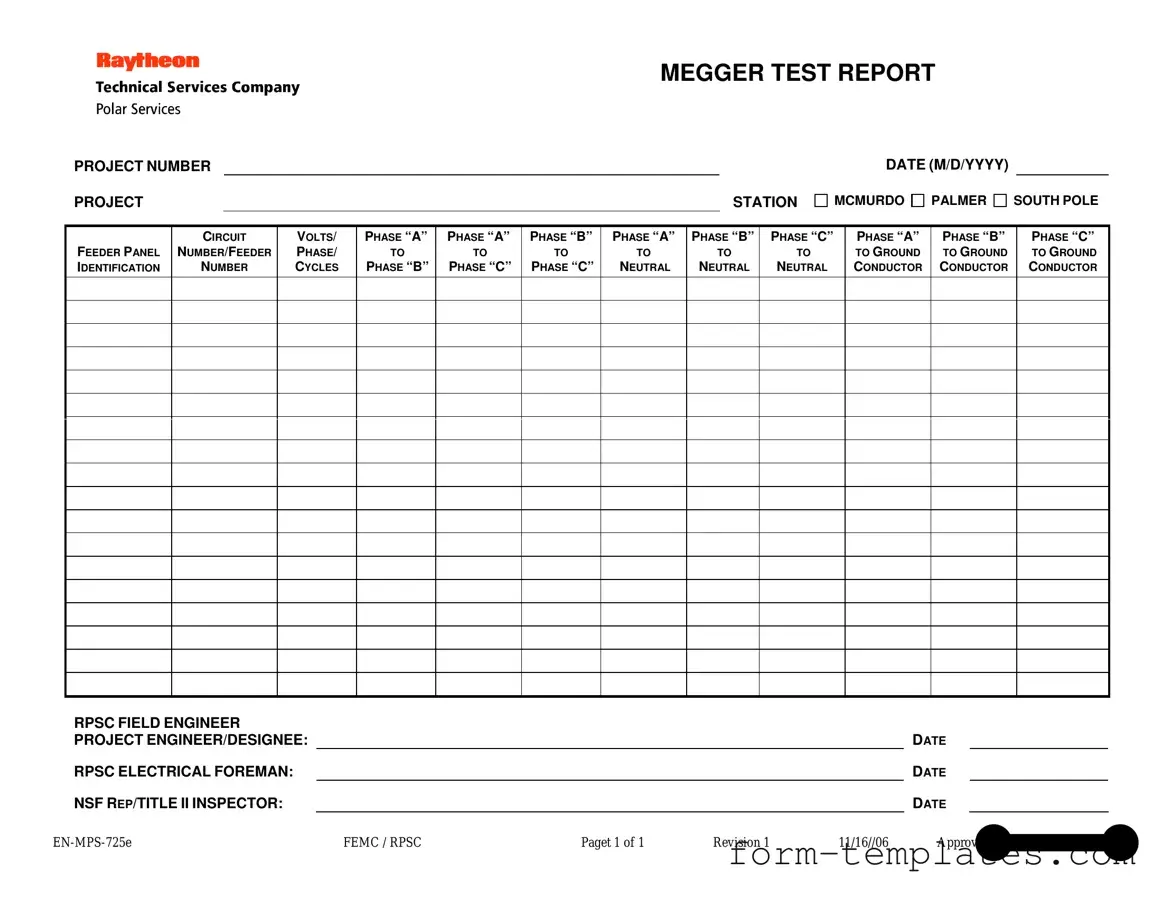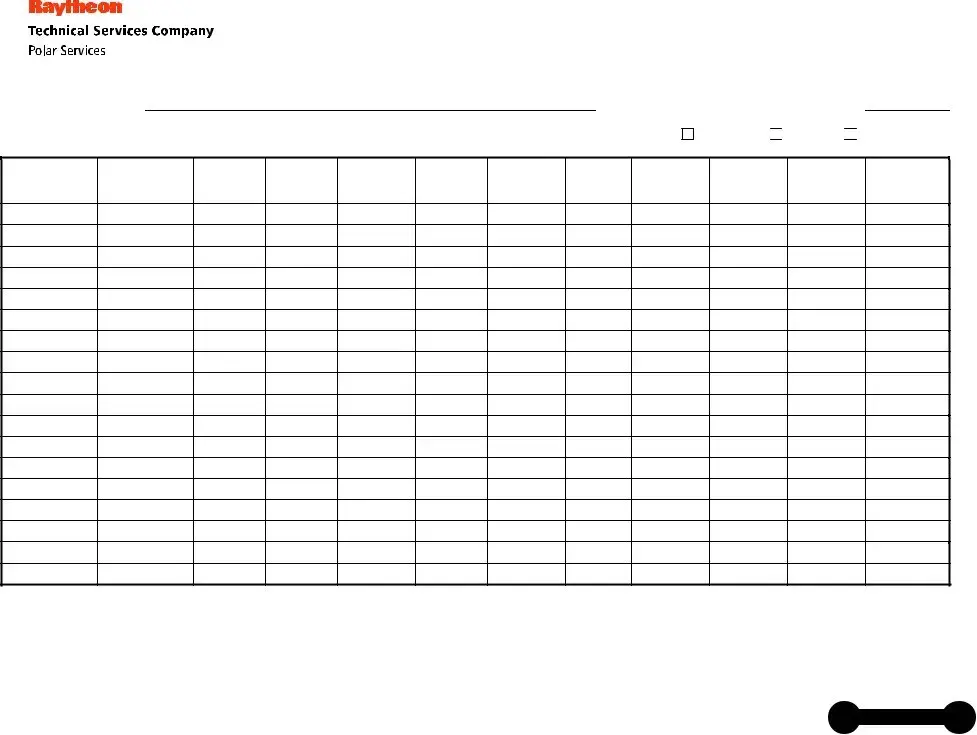The Megger Test form is used to document the results of insulation resistance testing on electrical systems. This testing helps ensure that electrical equipment is safe and functioning properly. By measuring the insulation resistance, engineers can identify potential issues that could lead to electrical failures or hazards.
The Megger Test form requires several key pieces of information, including:
-
Project number
-
Project station
-
Date of testing
-
Feeder panel identification
-
Circuit number or feeder number
-
Voltage, phase, and cycles
Additionally, it includes test results for various phase-to-phase and phase-to-neutral measurements, as well as details about the personnel involved in the testing.
Test results are recorded in specific fields corresponding to the various measurements taken. For example, the form includes sections for recording insulation resistance between different phases (e.g., Phase “A” to Phase “B”) and to neutral or ground. Each measurement is documented clearly, ensuring that all data is easily accessible for review and analysis.
Several individuals should sign the Megger Test form to verify the accuracy of the results. Typically, the following personnel are required to provide their signatures:
-
RPSC field engineer
-
Project engineer or designee
-
RPSC electrical foreman
-
NSF representative or title II inspector
This multi-signature requirement helps ensure accountability and thoroughness in the testing process.
Once the Megger Test form is completed and signed, it should be filed according to the project’s documentation procedures. Keeping a record of the test results is essential for future reference and compliance with safety regulations. It may also be used for audits or inspections by regulatory bodies.



 PALMER
PALMER 
 SOUTH POLE
SOUTH POLE